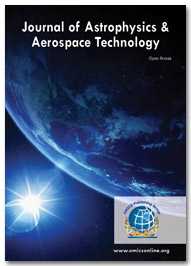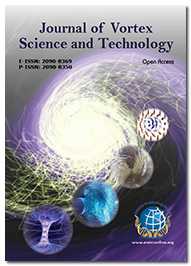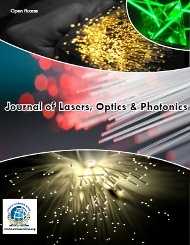Theme: Collaborating Particle Physics and Astrophysics Concepts Towards Understanding the Mechanism of Universe
Particle Physics 2016
ConferenceSeries LLC Ltd Conferences invites all the participants from all over the world to attend “International conference on Astrophysics and Particle Physics” during December 8-10, 2016, Dallas, USA which includes prompt keynote presentations, Oral talks, Poster presentations and Exhibitions.
Particle Physics 2016 aims to bring together a multi-disciplinary group of scientists and engineers to present and exchange breakthrough ideas relating to Early Universe, Dark Matter and Dark Energy, Gravitational Physics, Particle and Nuclear Astrophysics, Large-Scale Structures, Stellar Formation and Evolution, Observational Astronomy and Astrophysics, Celestial Mechanics, Theoretical Astronomy and Astrophysics, Astronomy Subfields,Interdisciplinary Studies, Space Observation and Exploration,Structure and Evolution of the Cosmos, Unsolved Problems in Astronomy.It promotes top-level research and to globalize the quality research in general, thus making discussions, presentations and contributions more internationally competitive.
Track 1: Astrophysics
Theoretical astronomy is the study of the analytical models of physics and chemistry to observe and analyse astronomical objects and astronomical phenomena. Theoretical astronomers use a wide range of tools which consists of Analytical models and Computational numerical simulations.
Related Astrophysics Conferences | Expo on Fluid Dynamics & Aerodynamics | International Conference on Physics
International Conference on Atomic and Nuclear Physics, November 17-19, 2016, Atlanta, USA; International Conference on Quantum Physics and Nuclear Engineering, March 14-16, 2016, London, UK; Global Summit and Expo on Fluid Dynamics & Aerodynamics, March 07-09, 2016, Madrid, Spain; 2nd International Conference and Exhibition on Mesoscopic and Condensed Matter Physics, October 27-29, 2016, Chicago, USA; The International Conference on Aerospace Technology and Particle Physics 2016 Singapore, 18th to 20th August 2016, Singapore; Water in the Universe: From Clouds to Oceans, APRIL 12-15, 2016, Noordwijk, The Netherlands; The Reionization Epoch: New Insights and Future Prospects, Sunday, 6 March 2016 - 12 March 2016, Aspen Center for Physics; Exploring the Universe with JSWT, October 12-16 2015, The Netherlands; 2016 Gordon Research Conference & Seminar "Origins of Life", January 16–22, 2016, Galveston, United States; Cosmic dawn of galaxy formation: linking observations and theory with new-generation spectral models, Monday, 20 June 2016 - Friday, 24 June 2016, Paris, France, American society of plant biologists, Astronomical Society of the Desert, Orange Country Astronomers, Riverside Astronomical Society, International dark sky association
Track 2: Astronomy
After the big bang, the universe was extremely hot and dense. As the universe cooled, conditions became just right to give rise to the building blocks of matter – the quarks and electrons of which we are all made. The first galaxies began to form half a billion to 1 billion years after Big Bang. Finding such galaxies has been a challenge because their light is so faint, which makes the discovery of a 13.2 billion-year-old galaxy.
Solar physics: Because the Sun is uniquely situated for close-range observing (other stars cannot be resolved with anything like the spatial or temporal resolution that the Sun can), there is a split between the related discipline of observational astrophysics (of distant stars) and observational solar physics. The study of solar physics is also important as it is believed that changes in the solar atmosphere and solar activity can have a major impact on Earth's climate. The Sun also provides a "physical laboratory" for the study of plasma physics
Planetary physics: Galileo's study of the lunar mountains in 1609 also began the study of extra-terrestrial landscapes: his observation "that the Moon certainly does not possess a smooth and polished surface" suggested that it and other worlds might appear "just like the face of the Earth itself". Advances in telescope construction and instrumental resolution gradually allowed increased identification of the atmospheric and surface details of the planets. The Moon was initially the most heavily studied, as it always exhibited details on its surface, due to its proximity to the Earth, and the technological improvements gradually produced more detailed lunar geological knowledge. In this scientific process, the main instruments were astronomical optical telescopes (and later radio telescopes) and finally robotic exploratory spacecraft. The Solar System has now been relatively well-studied, and a good overall understanding of the formation and evolution of this planetary system exists. However, there are large numbers of unsolved questions, and the rate of new discoveries is very high, partly due to the large number of interplanetary spacecraft currently exploring the Solar System.
Stellar Astronomy is a branch of Astronomy. It studies the general regularities in evolution, structure, composition and dynamics of stellar system. Galactic Astronomy is the study of our own Milky Way galaxy. Extragalactic Astronomy is the study of everything outside the Milky Way. Cosmology is the scientific study of the large scale properties of the universe as a whole. It endeavours to use the scientific method to understand the origin, evolution and ultimate fate of the entire Universe. Cosmology involves the formation of theories or hypotheses about the universe which make specific predictions for phenomena that can be tested with observations. Depending on the outcome of the observations, the theories will need to be abandoned, revised or extended to accommodate the data. The prevailing theory about the origin and evolution of our Universe is the so-called Big Bang theory.
Related Internal conference on Astronomy | Expo on Fluid Dynamics & Aerodynamics | Conference on Cosmology
2nd International Conference and Exhibition on Mesoscopic and Condensed Matter Physics, October 27-29, 2016, Chicago, USA; International Conference on Physics, June 27-29, 2016, New Orleans, USA; International Conference on Atomic and Nuclear Physics, November 17-19, 2016, Atlanta, USA; International Conference on Quantum Physics and Nuclear Engineering, March 14-16, 2016, London, UK; Global Summit and Expo on Fluid Dynamics & Aerodynamics, March 07-09, 2016, Madrid, Spain; The Diversity of Planetary Atmospheres (IV), 1 – 4 August 2016, Squamish, Canada; International Venus Conference 2016, 4-8 APRIL 2016, Oxford, UK; Workshop on mm-VLBI with ALMA, INAF - Institute for Radio Astronomy - 22nd and 23rd January 2015, Bologna, Italy; 47th Lunar and Planetary Science Conference, The Woodlands, March 21–25, 2016, Texas; 6th International Symposium on High-Energy Gamma-Ray Astronomy, Monday, 11 July 2016 - Friday, 15 July 2016, Heidelberg, Germany; Great Lakes Quasar Symposium, Monday, 2 May 2016 - Wednesday, 4 May 2016, London, Ontario, Canada; The Science of Time: Time in Astronomy & Society, Past, Present and Future, Sunday, 5 June 2016 - Thursday, 9 June 2016, Harvard University, Cambridge, MA; 6th International Symposium on High-Energy Gamma-Ray Astronomy, Monday, 11 July 2016 - Friday, 15 July 2016, Heidelberg, Germany, National space science & technology, North Jersey Astronomical Group, Royal astronomical society of Canada, Ventura County Astronomical Society.
Track 3: Cosmology and Celestial Mechanics
Our universe is both ancient and vast, and expanding out farther and faster every day. This accelerating universe, the dark energy that seems to be behind it and other puzzles like the exact nature of the Big Bang and the early evolution of the universe are among the great puzzles of cosmology. Dramatic advances in observational cosmology since the 1990s, including the cosmic microwave background, distant supernovae and galaxy redshift surveys, have led to the development of a standard model of cosmology. This model requires the universe to contain large amounts of dark matter and dark energy whose nature is currently not well understood, but the model gives detailed predictions that are in excellent agreement with many diverse observations. The branch of Astronomy which deals with the motion of Celestial bodies is known as Celestial mechanics. Celestial mechanics uses the principles of physics (classical mechanics) to astronomical objects, such as stars and planets, to produce ephemeris data. As an Astronomical field of study, celestial mechanics includes the sub-fields of Orbital mechanics and lunar theory. Orbital mechanics deals with the orbit of an artificial satellite and lunar theory, which deals with the orbit of the Moon.
Related Conference on Cosmology | Expo on Celestial Mechanics | International Conference on Physics
International Conference on Atomic and Nuclear Physics, November 17-19, 2016, Atlanta, USA; International Conference on Physics, June 27-29, 2016, New Orleans, USA; International Conference on Quantum Physics and Nuclear Engineering, March 14-16, 2016, London, UK; Global Summit and Expo on Fluid Dynamics & Aerodynamics, March 07-09, 2016, Madrid, Spain; 2nd International Conference and Exhibition on Mesoscopic and Condensed Matter Physics, October 27-29, 2016, Chicago, USA; Awareness conference on European Astronomy in the Optical and IR domain, Sept. 1- 11th, 2015, Brno, Czech Republic; APSS 2016 - the 2nd Conference on Astrophysics and Space Science, Feb 28 - Mar 1,2016, Beijing Yanshan Hotel, China; Fourth Workshop on Robotic Autonomous Observatories, 28 Sep-2 Oct 2015, Torremolinos, Spain; 15th Biennial ASCE International Conference on Engineering, Science, Construction and Operations in Challenging Environments, April 11-15, 2016, Orlando, FL; EWASS 2016: European Week of Astronomy and Space Science, Monday, 4 July 2016 - Friday, 8 July 2016, Athens, Greece; The 2nd Conference on Astrophysics and Space Science (APSS 2016), February 28 to March 1, 2016, Beijing, China; Star formation in different Environments, Monday, 25 July 2016 - Friday, 29 July 2016, ICISE, Quy Nhon, Vietnam; Novae and Cataclysmic Variables: a Multi-dimensional Perspective where Multi-wavelength Observations Meet Theory, Scientific Event E1.14, COSPAR-16, Saturday, 30 July 2016 - Sunday, 7 August 2016, Istanbul, Turkey, American society of plant biologists, Astronomical Society of the Desert, Orange Country Astronomers, Riverside Astronomical Society, International dark sky association.
Track 4: Gravitational Physics
Gravity is most accurately described by the general theory of relativity (proposed by Albert Einstein in 1915) which describes gravity, not as a force, but as a consequence of the curvature of space-time caused by the uneven distribution of mass/energy; and resulting in time dilation, where time lapses more slowly in strong gravitation. Gravitational physicists explore the implications of the general theory of relativity. Modern research in gravitational physics includes studying applications of numerical relativity, black hole dynamics, sources of gravitational radiation, critical phenomena in gravitational collapse, the initial value problem of general relativity, and relativistic astrophysics.
Related Conference on Gravitational Physics | International Conference on Physics | International Conference on Atomic and Nuclear Physics
International Conference on Quantum Physics and Nuclear Engineering, March 14-16, 2016, London, UK; Global Summit and Expo on Fluid Dynamics & Aerodynamics, March 07-09, 2016, Madrid, Spain; 2nd International Conference and Exhibition on Mesoscopic and Condensed Matter Physics, October 27-29, 2016, Chicago, USA; 2016-07 ASTROBIOLOGY AUSTRALASIA MEETING IN JULY 10-12 PERTH; International Symposium and Workshop on Astrochemistry, July 3rd to 8th, 2016, Campinas, Brazil; 15th EANA Astrobiology Conference, 6-9 Oct, 2015, Noordwijk, The Netherland; Astrobiology and Planetary Atmospheres, September 28- October 2, 2015, Santiago, Chile; Communicating Astronomy with the Public (CAP) Conference 2016, Monday, 16 May 2016 - Friday, 20 May 2016, Parque Explora, Medellin, Colombia; Statistical Challenges in 21st Century Cosmology (COSMO21), Tuesday, 24 May 2016 - Friday, 27 May 2016, Chania, Crete, Greece; International Symposium and Workshop on Astrochemistry - ISWA: Understanding the extraterrestrial molecular complexity through experiments, observations and models, Sunday, 3 July 2016 - Friday, 8 July 2016, Campinas, SP, Brazil; Molecular gas beyond the Milky Way: astronomy and astrochemistry in extragalactic environments, Monday, 4 April 2016 - Thursday, 7 April 2016, Charlottesville, Virginia, National space science & technology, North Jersey Astronomical Group, royal astronomical society of Canada, Ventura County Astronomical Society.
Track 5: Dark Matter and Dark Energy
Dark matter is a hypothetical kind of matter that cannot be seen with telescopes but would account for most of the matter in the universe. Atoms make up only 4.6% of the universe. The rest of the universe appears to be made of a mysterious, invisible substance called dark matter (25 %) and a force that repels gravity known as dark energy (70 %).
Related Conference on Dark Matter and Dark Energy | International Conference on Physics | International Conference on Quantum Physics and Nuclear Engineering
Global Summit and Expo on Fluid Dynamics & Aerodynamics, March 07-09, 2016, Madrid, Spain; International Conference on Physics, June 27-29, 2016, New Orleans, USA; International Conference on Atomic and Nuclear Physics, November 17-19, 2016, Atlanta, USA; 2nd International Conference and Exhibition on Mesoscopic and Condensed Matter Physics, October 27-29, 2016, Chicago, USA; The 28th Texas Symposium on Relativistic Astrophysics, December 13 to 18, 2015, Geneva, Switzerland; Protoplanetary Discussions, 7th - 11th March 2016, Edinburgh, Scotland; The 2015Annual meeting of the Astronomische Gesellschaft, 14 to 18 September 2015, Kiel, Germany; Radiation Mechanisms of Astrophysical Objects - Classics Today, September 21-25, 2015, St. Petersburg, Russia; 66th International Astronautical Congress (IAC 2015), 12–16 October 2015, Jerusalem, Israel; The Astrophysics of Planetary Habitability, February 8 – 12, 2016, Vienna, Austria; 13th Meeting of the Venus Exploration Analysis Group (VEXAG), October 27–29, 2015, Washington, DC; COSPAR Capacity Building Workshop on Planetary Data Mission Analysis, 26 October - 06 November 2015, Guaratingueta, Brazil; 46th Advanced Saas Fee Course: Lyman-alpha as an astrophysical and cosmological tool, Monday, 14 March 2016 - Saturday, 19 March 2016, Les Diablerets, Switzerland, The Royal Astronomical Society, Society for Astronomical Sciences, Astronomical Association, American Association of variable star observer.
Track 6: Stellar Formation and Evolution
The stars in the sky seem permanent and unchanging because it takes millions of billions of years for their lives to unfold. Stars are born in clusters within huge nebulas called star-forming regions. There, dark clouds of gas and dust collapse to form new stars.
Related International Conference on stars Formation | Conference on Stellar Formation | Expo on Evolution of Stellar Formation
International Conference on Atomic and Nuclear Physics, November 17-19, 2016, Atlanta, USA; International Conference on Quantum Physics and Nuclear Engineering, March 14-16, 2016, London, UK;International Conference on Physics, June 27-29, 2016, New Orleans, USA; International Conference and Exhibition on Mesoscopic and Condensed Matter Physics, October 27-29, 2016, Chicago, USA; Clusters of galaxies and hot baryons, UCL Mullard Space Science Lab, Tuesday, 6 October 2015 - Thursday, 8 October 2015 Surrey, UK; 12th UCLA symposium on "Sources and Detection of Dark Matter and Dark Energy in the Universe", February 17 -19, 2016 at UCLA, Los Angeles, CA; The XXVII International Conference on Neutrino Physics and Astrophysics (Neutrino 2016), 4 July to 9 July 2016, London; 38th ICHEP2016, AUGUST 3-10, 2016, Chicago; 41st COSPAR Scientific Assembly, 30th July, Istanbul, Turkey; 14th International Conference on Nuclei in the Cosmos (NIC-XIV 2016), Tuesday, 14 June 2016 - Friday, 17 June 2016, Sant Cugat, Barcelona, National space science & technology, North Jersey Astronomical Group, royal astronomical society of Canada, Ventura County Astronomical Society.
Track 7: Astrophysics and Space Science
With the development of rockets and the advances in electronics and other technologies in the 20th century, it became possible to send machines and animals and then people above Earth’s atmosphere into outer space. Well before technology made these achievements possible, however, space exploration had already captured the minds of many people, not only aircraft pilots and scientists but also writers and artists. In the 2000s, several plans for space exploration were announced; both government entities and the private sector have space exploration objectives. China has announced plans to have a 60-ton multi-module space station in orbit by 2020.
Related International Conference on Astrophysics | Symphony on Space Sciences | International Conference on Physics
International Conference on Quantum Physics and Nuclear Engineering, March 14-16, 2016, London, UK; International Conference on Atomic and Nuclear Physics, November 17-19, 2016, Atlanta, USA; Global Summit and Expo on Fluid Dynamics & Aerodynamics, March 07-09, 2016, Madrid, Spain; 2nd International Conference and Exhibition on Mesoscopic and Condensed Matter Physics, October 27-29, 2016, Chicago, USA; Aspen Winter Conference 2015, Black Holes in Dense Star Clusters, JANUARY 17-22, Aspen, USA; The 20th Annual International Conference on Gravitational Micro lensing, January 13-15, 2016, Paris; The Physics of Supermassive Black Hole Formation and Feedback, October 12 - 14, 2015, Annapolis, Maryland, USA; Black Holes and Friends 2015-03-30 - 2015-04-01, Shanghai, China; The 28th Texas Symposium on Relativistic Astrophysics, December 13 to 18, 2015, Geneva; The Physics of Extreme Gravity Stars: Using Binaries to Probe the Violent Universe, Tuesday, 7 June 2016 - Wednesday, 29 June 2016, Stockholm, Sweden; From theory to applications: celebrating a century of gravitational lensing, Monday, 11 July 2016 - Friday, 15 July 2016, Leiden, The Netherlands, National space science & technology, North Jersey Astronomical Group, royal astronomical society of Canada, Ventura County Astronomical Society.
Track 8: Telescopes
A telescope is an instrument that aids in the observation of remote objects by collecting electromagnetic radiation (such as visible light). The first known practical telescopes were invented in the Netherlands at the beginning of the 17th century, using glass lenses. They found use in terrestrial applications and astronomy.
Related International Conference on Telescopes | Symphony on Particles | Workshop on Physics
International Conference on Physics, June 27-29, 2016, New Orleans, USA; International Conference on Atomic and Nuclear Physics, November 17-19, 2016, Atlanta, USA; International Conference on Quantum Physics and Nuclear Engineering, March 14-16, 2016, London, UK; Global Summit and Expo on Fluid Dynamics & Aerodynamics, March 07-09, 2016, Madrid, Spain; 2nd International Conference and Exhibition on Mesoscopic and Condensed Matter Physics, October 27-29, 2016, Chicago, USA; The XXVII International Conference on Neutrino Physics and Astrophysics, 3–9 Jul 2016, London, United Kingdom; The International Workshop on Quark Phase Transition in Compact Objects, Multi messenger Astronomy, Neutrino Signals, Supernovae, Gamma-Ray Bursts, October, 7 - 14, 2015, Nizhnij Arkhyz, Russia; CORFU2015-Corfu2015: 15th Hellenic School and Workshops on Elementary Particle Physics and Gravity, 01 Sep 2015 26 -Sep 2015, Corfu, Greece; 8th European Summer School on Experimental Nuclear Astrophysics, 13 Sep 2015 - 20 Sep 2015 Santa Tecla, Italy; The 6th Fermi Asian Network (FAN) Workshop, 18-22 January, 2016, Jeollabuk-do, South Korea; 16th Divisional Meeting of the High Energy Astrophysics Division (HEAD) of the AAS, Wednesday, 16 August 2017 - Sunday, 20 August 2017, Jackson Hole, Wyoming, National space science & technology, North Jersey Astronomical Group, royal astronomical society of Canada, Ventura County Astronomical Society.
Track 9: Observational Large-Scale Structures
Observational astronomy is one of the classifications of the astronomical science that is related with recording data, in contrast with Theoretical astrophysics, which is mainly concerned with finding out the measurable implications of physical models. It is the practice of observing celestial objects by using telescopes and other astronomical apparatus. Radio astronomy is the branch of Astronomy which studies celestial bodies at Radio Frequencies. Infrared astronomy is the division of astronomy and astrophysics that studies astronomical objects visible in infrared (IR) radiation only. Optical Astronomy is also called as Visible Light Astronomy. Ultraviolet astronomy is the observation of electromagnetic radiation at ultraviolet wavelengths similarly X-ray Astronomy uses X-rays and Gamma ray Astronomy uses Gamma rays. Sky surveys and mappings of the various wavelength bands of electromagnetic radiation have yielded much information on the content and character of the universe's structure. The organization of structure appears to follow as a hierarchical model with organization up to the scale of super clusters and filaments.
Related International Conference on Physics | International Conference on Atomic and Nuclear Physics | Expo on Fluid Dynamics & Aerodynamics
International Conference on Quantum Physics and Nuclear Engineering, March 14-16, 2016, London, UK; 2nd International Conference and Exhibition on Mesoscopic and Condensed Matter Physics, October 27-29, 2016, Chicago, USA; Protoplanetary Disk Dynamics and Planet Formation, Sep 29 - Oct 2, 2015, Yokohama, Japan; 2016 Conference on Big Data from Space - BiDS'16, 15 MAR 2016 -17 MAR 2016,Santa Cruz de Tenerife, Spain; American Astronomical Society 227th Meeting, 4-8 January 2016, Kissimmee, FL; Workshop on Space Weathering of Airless Bodies, November 2-4, Houston, TX; IMPRS Summer school "Dynamics of the Interstellar Medium and Star Formation", 21 Sep 2015, Heidelberg, Germany; Dynamics and accretion at the Galactic Center, Sunday, 7 February 2016 - Friday, 12 February 2016, Aspen; Statistical Challenges in Modern Astronomy VI, Monday, 6 June 2016 - Friday, 10 June 2016, Pittsburgh, PA; Mapping the Pathways of Galaxy Transformation Across Time and Space, Sunday, 31 July 2016 - Friday, 5 August 2016, California, USA, The Royal Astronomical Society, Society for Astronomical Sciences, Astronomical Association, American Association of variable star observer.
Track 10: Particle Physics
Particle physics is the study of nature of the particles that institute matter and radiation. It deals with very small objects. Particle physics deals with the fundamental constituents of matter and their interactions. In the past several decades a huge amount of experimental information has been gathered, and many patterns and methodical features have been observed.
Related International Conference on Particle Physics | Symphony on Physics | International Conference on Atomic and Nuclear Physics
2nd International Conference and Exhibition on Mesoscopic and Condensed Matter Physics, October 27-29, 2016, Chicago, USA; International Conference on Physics, June 27-29, 2016, New Orleans, USA; International Conference on Atomic and Nuclear Physics, November 17-19, 2016, Atlanta, USA; International Conference on Quantum Physics and Nuclear Engineering, March 14-16, 2016, London, UK; Global Summit and Expo on Fluid Dynamics & Aerodynamics, March 07-09, 2016, Madrid, Spain; Sweeping galaxies clean: cold molecular outflows as drivers of galaxy evolution, Monday, 15 February 2016 - Sunday, 21 February 2016, Sexten Center for Astrophysics, Italy; Globular Clusters and Galaxy Halos, Monday, 22 February 2016 - Friday, 26 February 2016, Lorentz Center, Leiden, The Netherlands; IAUS 321: Formation and evolution of galaxy outskirts, Monday, 14 March 2016 - Friday, 18 March 2016, Toledo (Spain); IAUS 329: The lives and death-throes of massive stars, Monday, 28 November 2016 - Friday, 2 December 2016, Auckland, New Zealand; The Interplay Between Local and Global Processes in Galaxies, Sunday, 10 April 2016 - Thursday, 14 April 2016, Cozumel, Mexico; Resolving planet formation in the era of ALMA and extreme AO, May 16, 2016 -May 20, 2016, Santiago, Chile; Large Scale Structure and Galaxy Flows, Sunday, 3 July 2016 - Saturday, 9 July 2016, Quy Nhon, Vietnam, National space science & technology, North Jersey Astronomical Group, royal astronomical society of Canada, Ventura County Astronomical Society.
Track 11: Nuclear and Particle Physics
Nuclear physics and Particle Physics is the area of physics that studies atomic nuclei and their elements and interactions. The most commonly known kind of nuclear physics is nuclear power generation, the research has run to tenders in many fields, including nuclear medication and magnetic reverberation imaging, nuclear weapons, ion implantation in materials engineering, and radiocarbon dating in geology and archaeology.
Related Conference on Nuclear and Particle Physics | International Conference on Atomic and Nuclear Physics | International Conference on Quantum Physics and Nuclear Engineering
Global Summit and Expo on Fluid Dynamics & Aerodynamics, March 07-09, 2016, Madrid, Spain; International Conference on Physics, June 27-29, 2016, New Orleans, USA; International Conference on Quantum Physics and Nuclear Engineering, March 14-16, 2016, London, UK; 2nd International Conference and Exhibition on Mesoscopic and Condensed Matter Physics, October 27-29, 2016, Chicago, USA; 11th Pacific Rim Conference on Stellar Astrophysics, 14-17 December, 2015, Hong Kong, PR China; 32nd IAS Meeting of Sedimentology, 23 to 25 May 2016, Marrakech, Morocco; 2nd COSPAR Symposium, Water and Life in the Universe, 09 - 13 November 2015, Foz do Iguacu, Brazil; From Clouds to Protoplanetary Disks: The Astrochemical Link, 5-8 October 2015, Berlin, Germany; Extreme Solar Systems III, November 29 – December 4, 2015, Waikoloa Beach, Hawaii; The Mysteries and Inner Workings of Massive Stars, Monday, 27 February 2017 - Friday, 12 May 2017, KITP, Santa Barbara, USA; IAUS 321: Formation and evolution of galaxy outskirts, Monday, 14 March 2016 - Friday, 18 March 2016, Toledo (Spain); Supernova Remnants: An Odyssey in Space after Stellar death, Monday, 6 June 2016 - Friday, 10 June 2016, Chania, Crete, Greece, National space science & technology, North Jersey Astronomical Group, royal astronomical society of Canada, Ventura County Astronomical Society.
Track 12: Experimental Particle Physics
The experimental particle physics is to study the fundamental constituents of matter and their interaction. These activities are carried out in teamwork with international laboratories, where fundamental physics results are obtained. To study further, it is developing future detector technologies for experimentation, and computer grids for analysis of data.
Related International Conference on Particle Physics | Workshop on Physics | Conference on Quantum Physics
International Conference on Atomic and Nuclear Physics, November 17-19, 2016, Atlanta, USA; International Conference on Quantum Physics and Nuclear Engineering, March 14-16, 2016, London, UK; Global Summit and Expo on Fluid Dynamics & Aerodynamics, March 07-09, 2016, Madrid, Spain; 2nd International Conference and Exhibition on Mesoscopic and Condensed Matter Physics, October 27-29, 2016, Chicago, USA; Resolving Planet Formation in the Era of ALMA and Extreme AO, May 16 - 20, 2016, Santiago, Chile; Cloudy workshop 2016, 2016 June 20-24, Shandong University at Weihai, China; The Olympian Symposium, Cosmology and Epoch of Reionization, 18-22 May 2015, Olympus, Greece; Life in a Cosmic Context, 15-17 September 2015, Trieste, Italy; 15th Meeting of the NASA Small Bodies Assessment Group, June 28–June 30, 2016, Washington, DC; Essential Cosmology for Next Generation 2016, January 10th to 16th, 2016, Cancun, Mexico; EPSC2015 session: The importance of organic matter evolution from the Interstellar medium to planetary systems, Sept. 27, 2015 -Oct. 1, 2015, Nantes, France; Resolving planet formation in the era of ALMA and extreme AO, Monday, 16 May 2016 - Friday, 20 May 2016, Santiago, Chile, National space science & technology, North Jersey Astronomical Group, royal astronomical society of Canada, Ventura County Astronomical Society.
Track 13: The Future of Particle Physics
The clear and common top importance was to get all the vast science. we started the Large Hadron Collider (LHC) in 2015 and collide beams at close to its design energy of 14 TeV. The fact that we already achieved to discover the Higgs boson with beams colliding at 7 and 8 TeV is a great success. The LHC can continue delivering amazing physics from the energy frontier for two more decades.
Related International Conference on Particle Physics | Conference on Physics | Conference on Quantum Physics
International Conference on Atomic and Nuclear Physics, November 17-19, 2016, Atlanta, USA; International Conference on Physics, June 27-29, 2016, New Orleans, USA; International Conference on Quantum Physics and Nuclear Engineering, March 14-16, 2016, London, UK; Global Summit and Expo on Fluid Dynamics & Aerodynamics, March 07-09, 2016, Madrid, Spain; 2nd International Conference and Exhibition on Mesoscopic and Condensed Matter Physics, October 27-29, 2016, Chicago, USA; to Habitable Worlds, 28-29 October 2015, Budapest, Hungary; 15th Biennial ASCE International Conference on Engineering, Science, Construction and Operations in Challenging Environments, April 11-15, 2016, Orlando, FL; Life on Earth and Beyond: The History and Philosophy of the Origin of Life, 4 - 6 May 2015, Island of Ven, Sweden; Rainbows on the Southern Sky: Science and Legacy Value of the ESO Public Surveys and Large Programmes, 5 – 9 October 2015, Germany; International Symposium on Moon 2020-2030: A New Era of Coordinated Human and Robotic Explora 15-Dec-2015 to16-Dec-2015tion, Noordwijk, the Netherlands; The Interplay Between Local and Global Processes in Galaxies, Sunday, 10 April 2016 - Thursday, 14 April 2016, Cozumel, Mexico; The Mysterious Connection between Superluminous Supernovae and Gamma-Ray Bursts, Monday, 23 May 2016 - Wednesday, 25 May 2016, Baltimore, Maryland, Astronomical Society of the Desert, Orange Country Astronomers, Riverside Astronomical Society, International dark sky association, Astronomical Society of the Pacific.
Track 14: Unsolved Problems in Astrophysics and Particle Physics
There are many unsolved problems in Astrophysics and Particle Physics. Some of them are Corona, Dark Energy, Dark Matter, Diffuse Interstellar Bands, Extra-terrestrial Life, Fermi Paradox, M-Sigma Relation, Mass in General Relativity, Shape of the Universe, Ultra-High-Energy Cosmic Ray, Large hadron collider, Higgs boson and Unidentified Infrared Emission, Wow! Signal.
Related International Conference on Astrophysics | Conference on Particle Physics | Conference on physics
International Conference on Atomic and Nuclear Physics, November 17-19, 2016, Atlanta, USA; International Conference on Quantum Physics and Nuclear Engineering, March 14-16, 2016, London, UK; Global Summit and Expo on Fluid Dynamics & Aerodynamics, March 07-09, 2016, Madrid, Spain; 2nd International Conference and Exhibition on Mesoscopic and Condensed Matter Physics, October 27-29, 2016, Chicago, USA; 2016-07 ASTROBIOLOGY AUSTRALASIA MEETING IN JULY 10-12 PERTH; International Symposium and Workshop on Astrochemistry, July 3rd to 8th, 2016, Campinas, Brazil; 15th EANA Astrobiology Conference, 6-9 Oct, 2015, Noordwijk, The Netherland; Astrobiology and Planetary Atmospheres, September 28- October 2, 2015, Santiago, Chile; Communicating Astronomy with the Public (CAP) Conference 2016, Monday, 16 May 2016 - Friday, 20 May 2016, Parque Explora, Medellin, Colombia; Statistical Challenges in 21st Century Cosmology (COSMO21), Tuesday, 24 May 2016 - Friday, 27 May 2016, Chania, Crete, Greece; International Symposium and Workshop on Astrochemistry - ISWA: Understanding the extra-terrestrial molecular complexity through experiments, observations and models, Sunday, 3 July 2016 - Friday, 8 July 2016, Campinas, SP, Brazil; Molecular gas beyond the Milky Way: astronomy and astrochemistry in extragalactic environments, Monday, 4 April 2016 - Thursday, 7 April 2016, Charlottesville, Virginia, The Royal Astronomical Society , Society for Astronomical Sciences , Astronomical Association , American Association of variable star observer.
ConferenceSeries LLC Ltd Conferences invites all the participants from all over the world to attend “International conference on Astrophysics and Particle Physics” during December 8-10, 2016, Dallas, USA which includes prompt keynote presentations, Oral talks, Poster presentations and Exhibitions.
Particle Physics 2016 aims to bring together a multi-disciplinary group of scientists and engineers to present and exchange breakthrough ideas relating to Early Universe, Dark Matter and Dark Energy, Gravitational Physics, Particle and Nuclear Astrophysics, Large-Scale Structures, Stellar Formation and Evolution, Observational Astronomy and Astrophysics, Celestial Mechanics, Theoretical Astronomy and Astrophysics, Astronomy Subfields,Interdisciplinary Studies, Space Observation and Exploration,Structure and Evolution of the Cosmos, Unsolved Problems in Astronomy.It promotes top-level research and to globalize the quality research in general, thus making discussions, presentations and contributions more internationally competitive.
Importance& Scope:
The existence of the Earth's galaxy, the Milky Way, as a separate group of stars, was only proved in the 20th century, along with the existence of "external" galaxies, and soon after, the expansion of the Universe, seen in the recession of most galaxies from us. Modern astronomy has also discovered many exotic objects such as quasars, pulsars, blazars, and radio galaxies, and has used these observations to develop physical theories which describe some of these objects in terms of equally exotic objects such as black holes and neutron stars. Physical cosmology made huge advances during the 20th century, with the model of the Big Bang heavily supported by the evidence provided by astronomy and physics, such as the cosmic microwave background radiation, Hubble's law, and cosmological abundances of elements. Space telescopes have enabled measurements in parts of the electromagnetic spectrum normally blocked or blurred by the atmosphere. The core aim of Particle Physics 2016 conference is to provide an opportunity for the delegates to meet, interact and exchange new ideas in the various areas of Astrophysics.
Why to attend?
The aim of Particle Physics 2016 meeting is to bring together a multi-disciplinary group of scientists and engineers to present and exchange breakthrough ideas relating to Early universe, Dark matter and dark energy, Gravitational physics, Particle and nuclear astrophysics, Large-scale structures, Stellar formation and evolution, Solar physics. It promotes top-level research and to globalize the quality research in general, thus making discussions, presentations and contributions more internationally competitive.
Target Audience:
- Aerospace Engineers
- Aeronautical Engineers
- Mechanical Engineers
- Instrumentation Engineers
- Electrical Engineers
- Electronic and Communication Engineers
- Astronomers
- Scientists
- Professors
- Students
Summary:
Astronomy is one of the oldest sciences. The early civilizations in recorded history, such as the Babylonians, Greeks, Indians, Egyptians, Nubians, Iranians, Chinese, and Maya performed methodical observations of the night sky. However, the invention of the telescope was required before astronomy was able to develop into a modern science. Historically, astronomy has included disciplines as diverse as astrometry, celestial navigation, observational astronomy and the making of calendars, but professional astronomy is nowadays often considered to be synonymous with astrophysics. Significant advances in astronomy came about with the introduction of new technology, including the spectroscope and photography. Fraunhofer discovered about 600 bands in the spectrum of the Sun in 1814–15, which, in 1859, Kirchhoff ascribed to the presence of different elements. Stars were proven to be similar to the Earth's own Sun, but with a wide range of temperatures, masses, and sizes. Although the scientific discipline of astronomy has made tremendous strides in understanding the nature of the universe and its contents, there remain some important unanswered questions. Answers to these may require the construction of new ground- and space-based instruments, and possibly new developments in theoretical and experimental physics.
We invite you, on behalf of the Organizing Committee, to this excellent meeting with great scientists from different countries around the world and sharing new and exciting results in Astronomy and Astrophysics World, which will be held in USA from August 8-9, 2016.This exciting and informative conference program including plenary lectures, symposia, workshops on a variety of topics, poster presentations and various programs for participants from all over the world.
Importance & Scope:
The existence of the Earth's galaxy, the Milky Way, as a separate group of stars, was only proved in the 20th century, along with the existence of "external" galaxies, and soon after, the expansion of the Universe, seen in the recession of most galaxies from us. Modern astronomy has also discovered many exotic objects such as quasars, pulsars, blazars, and radio galaxies, and has used these observations to develop physical theories which describe some of these objects in terms of equally exotic objects such as black holes and neutron stars. Physical cosmology made huge advances during the 20th century, with the model of the Big Bang heavily supported by the evidence provided by astronomy and physics, such as the cosmic microwave background radiation, Hubble's law, and cosmological abundances of elements. Space telescopes have enabled measurements in parts of the electromagnetic spectrum normally blocked or blurred by the atmosphere. The core aim of Particle Physics 2016 conference is to provide an opportunity for the delegates to meet, interact and exchange new ideas in the various areas of Astrophysics.
Why Dallas, USA?
Dallas is a major city in the state of Texas and is the largest urban center of the fourth most populous metropolitan area in the United States. The city proper ranks ninth in the U.S. and third in Texas. The city's prominence arose from its historical importance as a center for the oil and cotton industries, and its position along numerous railroad lines.
Dallas has a large community college enrolment. Dallas and its nearby communities are home to 45 colleges and universities, which attract more than 250,000 students to the area each year. Public universities in the Dallas area include the University of North Texas, the University of Texas at Dallas, and Texas Women's University. The Dallas County Community College District consists of seven colleges located throughout Dallas County. These community colleges enroll nearly 100,000 students each semester.
There are many career and education opportunities for astronomers in the Dallas, Texas area. Currently, 350 people work as astronomers in Texas. This is expected to grow by 23% to about 420 people by 2016. This is better than the nation as a whole, where employment opportunities for astronomers are expected to grow by about 16.0%. Astronomers generally observe, research, and interpret celestial and astronomical phenomena to increase basic knowledge and apply such information to practical problems. There is one school within twenty-five miles of Dallas where can study to be an astronomer, among eighty-three schools of higher education total in the Dallas area. University of North Texas is a large university located in Denton, Texas. It is a public school with primarily 4-year or above programs. It has 34,795 students and an admission rate of 64%. University of North Texas has a master's degree program in Astrophysics.
Why to attend?
The aim of Particle Physics 2016 meeting is to bring together a multi-disciplinary group of scientists and engineers to present and exchange breakthrough ideas relating to Early universe, Dark matter and dark energy, Gravitational physics, Particle and nuclear astrophysics, Large-scale structures, Stellar formation and evolution, Solar physics. It promotes top-level research and to globalize the quality research in general, thus making discussions, presentations and contributions more internationally competitive.
Major Astronomy and Astrophysics Associations around the Globe:
- The Royal Astronomical Society
- International Astronomical Union
- Amateur Astronomers Association of Pittsburgh
- International Meteor Organization
- The Planetary Society
- Astronomical Association of Queensland
- Astronomical Institute of Amsterdam
- Astronomical League
- Astronomical Society at the University of Illinois
- Astronomical Society of Palm Beaches
Major Astrophysics Associations in USA:
- American Astronomical Society
- American Association of Variable Star Observers
- American Meteor Society
- Southern Cross Astronomical Society
- Northern Virginia Astronomy Club
- Astronomical Society of Nevada
- Las Vegas Astronomical Society
- Mohawk Valley Astronomical Society
- Federation of Astronomical Societies
- British Astronomical Association
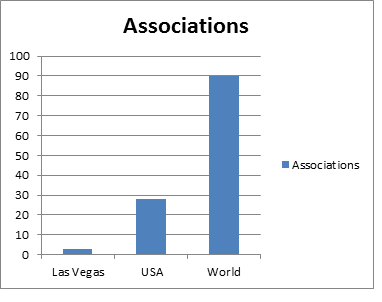
Figure 1: Statistical Analysis of Associations
Target Audience:

Top Universities in USA:
Harvard University
Stanford University
University of California, Berkeley
Massachusetts Institute of Technology (MIT)
Princeton University
Columbia University
University of Chicago
Yale University
Global University
University of California, Los Angeles
University of Pennsylvania
Cornell University
University of California, San Diego
University of Michigan
Johns Hopkins University
University of Washington
University of Texas at Austin
Duke University
Northwestern University
Jesuit School of Theology of Santa Clara University
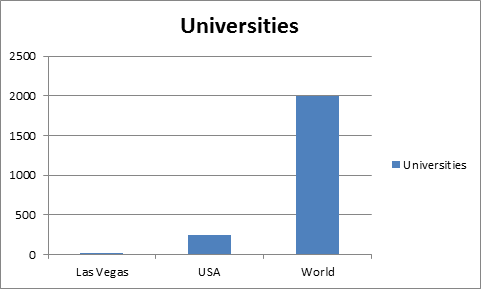
Figure 3: Top Universities
Glance at Market of Astrophysics:
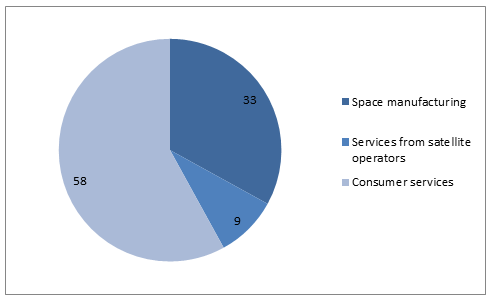
Fig 4: Main segments of the space economy

Come be Part of it...!
Conference Highlights
- Astronomy
- Neutrino Astronomy
- Gravitational Physics
- Particle physics
- Instrumentation
- Higgs Physics
- Particle Accelerators
- Nuclear and Particle Physics
- Astrophysics and Space Science
- Astroparticle Physics
- Heavy-ion physics
- Neutrino Physics
- Cosmology
- Nuclear Physics for Astrophysics
- Chemistry Involved in Astronomy
- Dark Matter and Dark Energy
- The Future of Particle Physics
- Atomic and Molecular Astrophysics
To share your views and research, please click here to register for the Conference.
To Collaborate Scientific Professionals around the World
| Conference Date | December 08-10, 2016 | ||
| Sponsors & Exhibitors |
|
||
| Speaker Opportunity Closed | Day 1 | Day 2 | Day 3 |
| Poster Opportunity Closed | Click Here to View | ||
Useful Links
Special Issues
All accepted abstracts will be published in respective Our International Journals.
- Journal of Astrophysics & Aerospace Technology
- Journal of Pure and Applied Physics
- Journal of Lasers, Optics & Photonics
Abstracts will be provided with Digital Object Identifier by
















